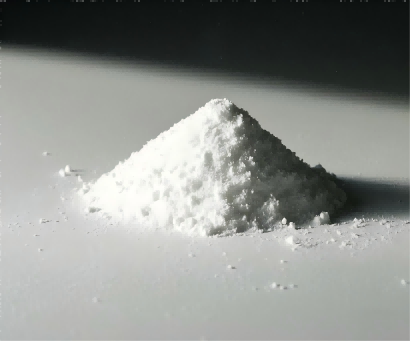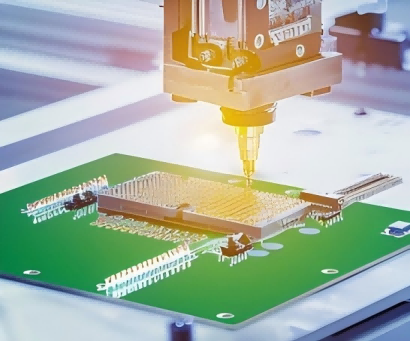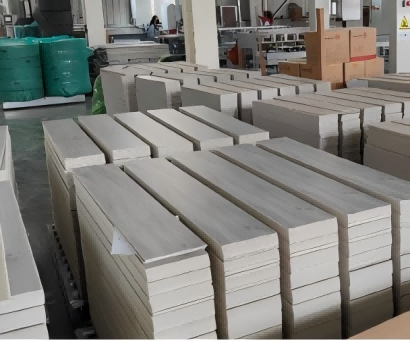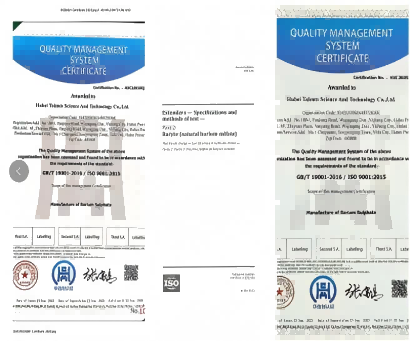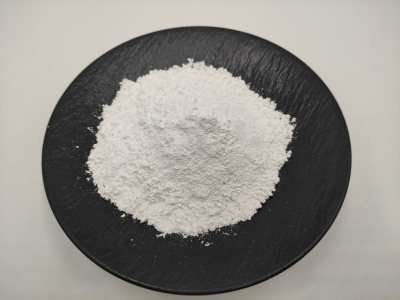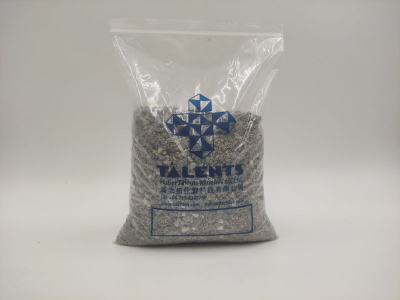Nano Precipitated Barium Sulfate
Nano Precipitated Barium Sulfate is an advanced form of barium sulfate. It is synthesized via a precise precipitation process, yielding nanoscale particles. This small size gives it notable properties. Compared to regular barium sulfate, it has higher purity and better dispersibility. In industries like coatings, it boosts gloss, hiding power, and durability. In plastics, it serves as an effective filler, enhancing tensile and impact strength while maintaining good processability. Its chemical stability makes it fit for harsh - environment applications, playing a key role in improving product performance across multiple sectors.
Product Name: Nano Precipitated Barium Sulfate
Product Abbreviation:Nano Precipitated Barium Sulfate
Supply Capacity:1000MT/Per month
Delivery Time:Within 15 working days after payment
Product Weight:25kg/bag
Nano-precipitated barium sulfate is an advanced form of precipitated barium sulfate, and is also a High Dispersion Precipitated Barium Sulphate. It has better dispersion and purity. It produces nanoparticles through a unique process and is a very good filler. It can be used in many fields such as plastics.
Index | TLZ-PBS302 |
BaSO₄ Content min% | 98% min |
Moisture max % | 0.15 |
Water Soluble max % | 0.15 |
lron Content | 5 ppm |
Whiteness % | 97 min |
Brightness (L Value ) | 98-99% |
Oil Absorption | 10-20 g/cm³ |
PH | 6.5-9.0 |
Particle Size D50 | 0.3 μm |
Residue (45 μm) | 0.02% max |
Conductivity | 150 μs/cm |
Our barium sulfate is used in construction, food, pharmaceutical, PVC, personal care and other industries as follows:
1.Pharmaceutical field:
As a contrast agent for X-ray and CT scanning, it can enhance the contrast effect of organs or blood vessels in the body due to its high density and high absorption, helping doctors to make accurate diagnosis.
Used in the treatment of gastrointestinal disorders, such as gastric ulcers and colitis, patients can drink a solution containing barium sulfate and observe the gastrointestinal tract through X-ray examination.
2.Industrial field:
Plastic and rubber: as filler to improve the hardness, abrasion resistance and aging resistance of the products, and at the same time reduce the cost.
Coatings and paints: as white pigment and filler, to increase the thickness, strength and durability of the paint film, and to improve the covering power and gloss of the coating.
Paper making: as filler, improve the whiteness and opacity of paper, improve the smoothness and uniformity of paper.
Ceramics and glass: as raw material to improve the physical properties of products, such as whiteness, density and heat resistance.
Oil and gas: as an aggravating agent for drilling mud to help stabilize well walls and prevent blowouts.
3.Environmental protection:
Used as a precipitant to treat heavy metal ions in wastewater to form water-insoluble precipitates, thus removing heavy metal pollutants.
4.Geological exploration:
As a heavy sand mineral of barite, it is used to measure the grade and reserves of the ore and guide the mining and utilization of the ore.
5.Other fields:
Construction materials: used as concrete aggregate, paving materials, used as shielding material instead of lead sheet in nuclear facilities, X-ray laboratories, etc.
Electronics and optics: used in the manufacture of optical components and window materials due to its high refractive index and optical stability.
Our Advantages
With more than 18 years of experience in the chemical industry, Talents has its own mines and professional team to support our products to be sold all over the world. Currently, Talents has passed the ISO9001,ISO3262-2, ISO2024 certification, and all heavy metal tests of ROHS are qualified.
Nano Precipitated Barium Sulfate (Nano-PBS) is a highly refined inorganic compound derived from the controlled precipitation of barium sulfate (BaSO₄) at the nanometer scale. Its exceptional whiteness, low oil absorption, chemical inertness, and excellent dispersion properties have made it indispensable in high-end applications across plastics, coatings, batteries, medical imaging, and precision optics.
This article explores the chemical structure, engineering characteristics, production principles, regulatory considerations, and application guidelines of nano precipitated barium sulfate. It also offers real-world examples, standard references, and practical usage recommendations.
What Is Nano Precipitated Barium Sulfate?
Nano-PBS is synthesized through a wet precipitation process, where barium salts (e.g., BaCl₂) react with sulfate sources (e.g., Na₂SO₄) under controlled pH, temperature, and stirring rates to achieve nano-scale crystal formation (10–100 nm).
Chemical Formula:
BaSO₄ (Barium Sulfate)
Particle Size: 20–100 nm (average D50)
Purity: ≥ 98.5%
CAS Number: 7727-43-7
Engineering and Material Properties
| Property | Value / Range | Relevance |
|---|---|---|
| Refractive Index | 1.64 | Enhances whiteness, gloss in coatings |
| Density | 4.3–4.5 g/cm³ | Contributes to weight, opacity |
| Oil Absorption | 10–15 g/100g | Low interaction with resins/binders |
| Hardness (Mohs) | ~3 | Soft filler—doesn’t abrade processing tools |
| pH (10% Solution) | 6.5–8.5 | Compatible with acidic or alkaline systems |
| Surface Area (BET) | 30–60 m²/g | High dispersion and reactive surface area |
Manufacturing Process Overview
Raw Material Selection: High-purity BaCl₂ and Na₂SO₄ solutions.
Controlled Precipitation:
pH control (6.5–9)
Nano-level nucleation under agitation
Aging & Crystal Growth: Ensures uniform nano-particles.
Washing & Filtration: Removes by-products and unreacted ions.
Drying & Surface Treatment:
Surface modification using silane, polymer coatings, or stearates for improved compatibility with polymers or organics.
Standards and Compliance
| Standard / Regulation | Relevance |
|---|---|
| REACH (EC 1907/2006) | Registered substance; safe for commercial use in the EU |
| FDA 21 CFR 73.1095 | Permits use in color additives for food-contact polymers |
| RoHS Directive (EU) | Compliant — does not contain heavy metals or toxins |
| ISO 3262-4:2021 | Defines chemical and physical specs for BaSO₄ fillers |
| ASTM D4326 | Testing method for barium content via XRF spectroscopy |
Applications of Nano Precipitated Barium Sulfate
1. High-Performance Plastics
Acts as a functional filler in PP, PE, ABS, PET, and PVC.
Improves:
Dimensional stability
UV resistance
Color consistency
Common in: automotive interiors, electrical casings, and medical packaging.
2. Industrial Coatings and Paints
Enhances:
Gloss and color brightness
Weathering resistance
Anti-settling behavior
Suitable for high-solids, powder, and electrocoating systems.
3. Battery and Energy Storage
Used in Li-ion and NiMH battery separators as an inert filler to improve mechanical strength and thermal stability.
Provides thermal insulation and dielectric strength.
4. Optics and Imaging
Due to high radiopacity, used in:
Contrast agents in X-ray imaging
Plastic lenses and optical parts to improve clarity and uniformity
5. 3D Printing and Photopolymers
Provides flow modification and UV barrier in SLA/DLP printing materials.
Technical Guidelines for Use
Dispersion Tips:
Use high-speed dispersers or ultrasonic mixers to avoid agglomeration.
Add dispersant like polyacrylic acid for water-based systems or wetting agents for solvent systems.
Dosage Recommendations:
| Application | Typical Loading (%) |
|---|---|
| Plastics | 5–40% |
| Paints/Coatings | 10–25% |
| Printing Inks | 2–10% |
| Elastomers | 5–15% |
Store in dry, sealed containers under 30°C.
Use dust control measures (per OSHA PEL limits: 10 mg/m³ total dust).
Performance Advantages Over Conventional Barium Sulfate
| Property | Nano Precipitated BaSO₄ | Conventional BaSO₄ |
|---|---|---|
| Particle Size | 20–100 nm | 1–5 µm |
| Surface Area | High | Moderate |
| Dispersion in Polymers | Excellent | Average |
| Optical Clarity | High | Moderate |
| Resin Compatibility | High (post-treatment) | Moderate |
| Oil Absorption | Low | Higher |
Frequently Asked Questions (FAQs)
❓ What is the difference between nano and micronized BaSO₄?
Nano BaSO₄ offers higher surface area, better dispersion, and enhanced functional properties, especially in optical and coating applications, whereas micronized forms are typically cheaper and coarser.
❓ Is nano barium sulfate safe?
Yes. It is chemically inert, non-toxic, and compliant with REACH, RoHS, and FDA standards. However, standard nanosafety protocols should be followed during handling.
❓ How does it improve plastic performance?
It enhances mechanical strength, UV stability, and processability, particularly in thin-wall injection molding or extrusion.
❓ Can it be used in water-based systems?
Yes, but surface treatment (e.g., silane or acrylic polymer) is recommended to improve hydrophilicity and prevent settling.
Summary: Why Nano Precipitated Barium Sulfate Matters
| Feature | Benefit |
|---|---|
| Nano-scale particle size | Superior dispersion, clarity, and strength |
| High whiteness and inertness | Ideal for optical, medical, and aesthetic applications |
| Surface-modifiable | Compatible with diverse systems—aqueous or solvent-based |
| Standards-compliant | Safe for global trade and industrial usage |


